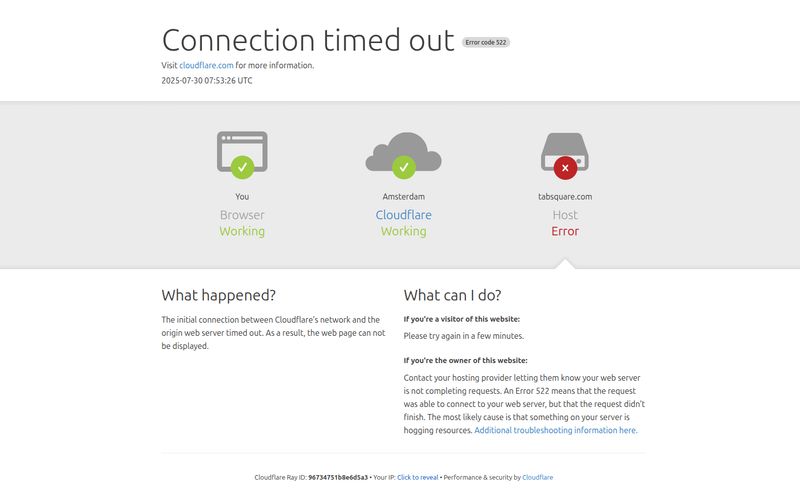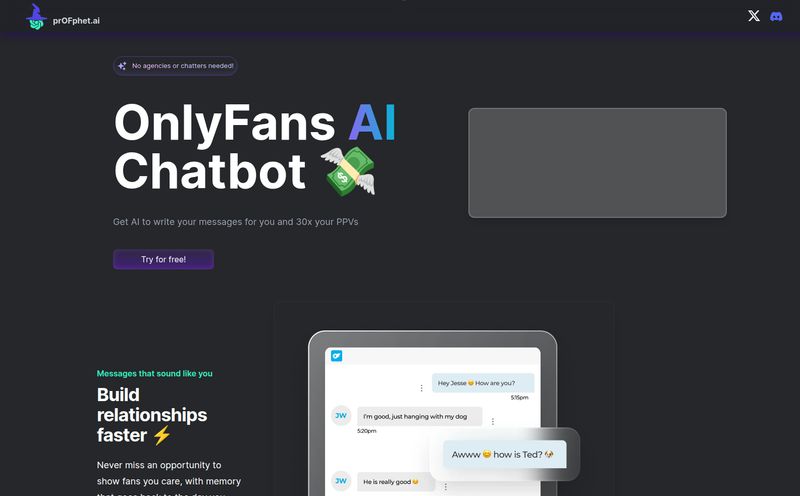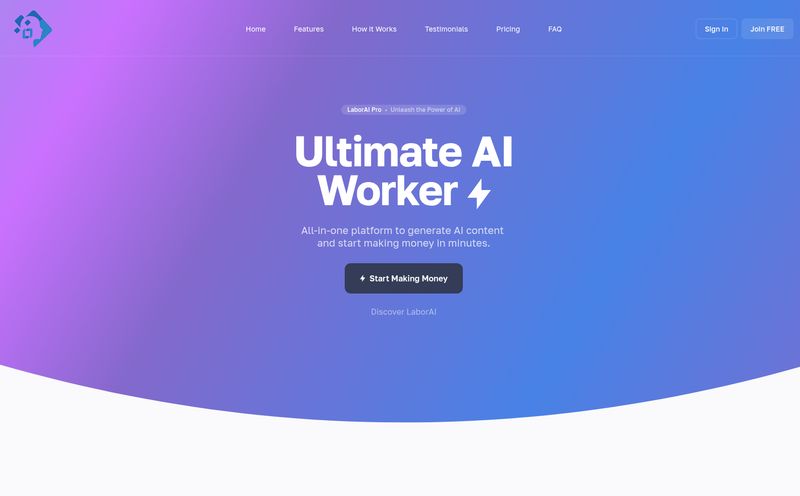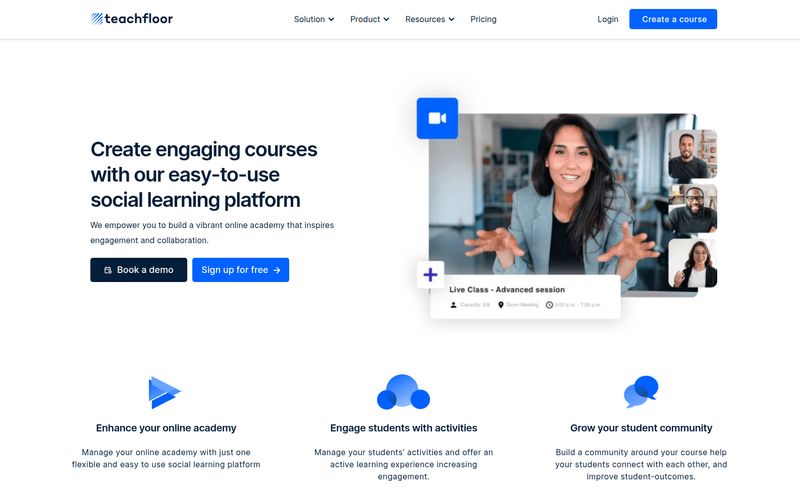If you've ever been in sales or lead generation, you know the grind. The endless hours scrolling through LinkedIn Sales Navigator, trying to find that one little nugget of information to make your cold email sound... well, less cold. I’ve been there. I once spent an entire afternoon crafting what I thought was the perfect outreach sequence, only to get a response rate that would make a rock weep. It’s soul-crushing.
We're told constantly that personalization is king. And it is! A generic "Dear Sir/Madam" email gets deleted faster than you can say "spam filter." But who has the time to manually research every single prospect, find their recent company news, check their latest post, and then weave it all into a clever opening line? It’s a full-time job on top of your actual full-time job.
So when a tool like Strama comes along, promising to do all that heavy lifting with AI, my ears perk up. But as an SEO and traffic guy who's seen a million 'game-changing' tools come and go, I'm also skeptical. Can an AI really automate the most human part of sales—connection? I decided to take a look under the hood.
So, What is Strama, Really?
In a nutshell, Strama is an AI-powered sales automation platform. But that's a bit of a dry, corporate way of putting it. Think of it more like a hyper-efficient research assistant and a clever copywriter rolled into one. You give it a list of leads (say, from a LinkedIn search), and it gets to work. It doesn't just scrape names and job titles. It digs into their profiles, their company's recent activities, and other public data to understand the context of who they are and what they care about right now.
Then, it uses that research to automatically build out a complete multi-touch outreach sequence. We’re talking emails, LinkedIn connection requests, follow-ups… the whole nine yards. The big promise is turning a 30-minute manual research and writing task into something that happens almost instantly. It’s designed to be simple: define your pitch, add your leads, and let the AI handle the grunt work.

Visit Strama
How It Actually Works in Practice
The workflow is refreshingly straightforward, which I appreciate. You’re not bogged down in a million settings and configurations before you can even get started.
First, you define your pitch. This is crucial. You're telling the AI what you're selling and why it's valuable. Then, you feed it your prospects. This can be a list of LinkedIn profiles, and from there, Strama’s AI takes over. It scours the web for personalized hooks for each person. It then populates a multi-step sequence with messages that are, frankly, surprisingly good. It’s not just inserting `[Company Name]` into a template; it's crafting sentences based on what it found. For instance, it might generate an opening line like, "Saw your company just secured Series B funding, congrats! As you scale your engineering team, our platform could help..." That's a world away from the generic stuff that usually clogs my inbox.
My Favorite Strama Features
A few things really stood out to me as I was playing around with the platform.
The AI Prospect Research is a Legitimate Timesaver
This is the core of Strama's magic. The quality of the automated research is what makes or breaks a tool like this. I've always felt the most tedious part of sales isn't the talking, it's the prep work. Strama automates that prep work. It finds the conversation starters so you can focus on the conversation. It's the difference between walking into a meeting cold and walking in with a full dossier on who you're meeting with. That context is everything for building rapport and getting better reply rates.
Automated Sequences That Don't Sound Robotic
Let's be honest, this is the biggest fear with any AI writer. Will it sound like a robot? Strama does a pretty impressive job of creating natural-sounding copy. Is it perfect every single time? No. And that brings me to a really important point. You shouldn't blindly trust any AI. The best way to use Strama is as a high-powered assistant. It does 90% of the work, and you come in for the final 10% polish. You give the messages a quick once-over, tweak a word here or there, and then hit send. That human-in-the-loop approach is where the real power is. It saves you hours, but keeps you in control of your brand's voice.
The Good, The Bad, and The AI-Generated
No tool is perfect. Let's get into the nitty-gritty. What do I genuinely love, and what are the things you should be aware of before jumping in?
What I Love About Strama
The time savings are not a joke. It genuinely turns a slog of a task into a few clicks. The setup is also incredibly simple; you can get your first campaign rolling in minutes, not hours. I'm a big fan of any platform that doesn't require a certification course to figure out. And the fact that they offer a completely free Starter plan is huge. It's not a timed trial; it's a legitimate free tier that lets you kick the tires with 50 credits a month. It shows confidence in their product, and I respect that.
A Few Things to Keep in Mind
As I mentioned, you can't just set it and forget it entirely. The AI is good, but your reputation is on the line with every outrach message. You still need your human brain to do a final check. Think of it as a brilliant but sometimes overeager intern. You have to proof their work. Also, for the power users out there, the really deep, custom integrations (like connecting to a niche-specific CRM) are reserved for the Enterprise plan. This is pretty standard practice, but it's something to be aware of if your tech stack is complex.
Let's Talk Money: Strama's Pricing Plans
Pricing is always a big question, and Strama's structure is pretty clear. I’ve broken it down for you here.
| Plan | Price | Key Features |
|---|---|---|
| Starter | $0 / month | 50 credits/month, up to 3 team members, AI prospect research. |
| Growth | $100 / month | 1,000 credits/month, up to 10 team members, priority support. |
| Enterprise | Custom | Custom credits, unlimited members, dedicated manager, custom integrations. |
In my opinion, the Starter plan is a no-brainer for freelancers, consultants, or small businesses just dipping their toes into automated outreach. The Growth plan is the sweet spot for established sales teams that need more volume and faster support. The Enterprise plan is for the big leagues with specific, complex needs.
Who Is Strama For (And Who Should Probably Skip It)?
Strama really shines for B2B sales development representatives (SDRs), account executives (AEs), lead generation agencies, and founders who are still pounding the pavement to make their first sales. If your job involves reaching out to specific professionals in a considered way, this tool is built for you.
Who should pass? Probably B2C companies that rely on mass-market advertising. If your customer is "everyone," then the hyper-personalization here is likely overkill. Also, if you're just looking for a simple email blaster to send out a monthly newsletter, there are other, more basic tools for that.
Strama vs. The Other Guys
The sales tech space is crowded. You've got the giant, all-in-one platforms that try to do everything and can feel a bit bloated. You've also got a million little chrome extensions that do one tiny thing. Strama seems to be carving out a nice niche for itself. It’s not trying to be your CRM, your calendar, and your coffee maker. It focuses on doing one thing exceptionally well: automating the research and writing for personalized outreach.
Some might argue that relying on AI is risky, but I'd counter that sending generic, uninspired templates is even riskier. At least with a tool like Strama, you're starting from a place of relevance. You’re showing the prospect you’ve done at least a little bit of homework, even if AI gave you the cliff notes.
My Final Verdict on Strama
So, is Strama worth it? In my experience, yes. It's a thoughtfully designed tool that solves a very real, very annoying problem for sales professionals. It doesn't promise to close deals for you—that part is still on you. What it does is give you back your most valuable resource: time. It handles the robotic, repetitive tasks, freeing you up to build actual relationships, have meaningful conversations, and do the human things that AI can't.
If you’re tired of the prospecting grind and want to see if AI can lend a hand, I’d say giving the free Starter plan a try is one of the easiest decisions you’ll make this week. It might just be the research assistant you've always wished you had.
Frequently Asked Questions
Is Strama easy to set up?
Yes, absolutely. The onboarding is very intuitive. You can connect your accounts and start building your first outreach sequence in just a few minutes without needing to read a massive knowledge base.
Can I really trust the AI-generated messages?
You can trust them to be about 90% of the way there. They are generally well-written and relevant. However, I always recommend a quick human review to add a final touch of personality and ensure it perfectly matches your tone before sending.
What counts as a "credit" in Strama?
A credit is typically used when the AI performs a major action, like researching a prospect and generating a personalized sequence for them. The free plan's 50 credits are enough to get a solid feel for the platform's capabilities.
Does Strama integrate with my CRM?
Strama offers custom integrations on its Enterprise plan. For standard plans, the workflow is more focused on generating the outreach, which you would then manage. It's best to check their site or contact them for specific CRM questions.
Is there a free trial for Strama?
Even better! Strama offers a permanently free "Starter" plan that includes 50 credits per month. It's not a timed trial, so you can use it for as long as you like to see if it fits your workflow.
How does Strama get its prospect information?
Strama uses its AI to scan publicly available information from sources like LinkedIn profiles, company websites, and news articles to find relevant, recent information that can be used to personalize your outreach.
Reference and Sources
- Strama Official Pricing Page
- McKinsey & Company: The secret to great B2B sales? Personalize everything



